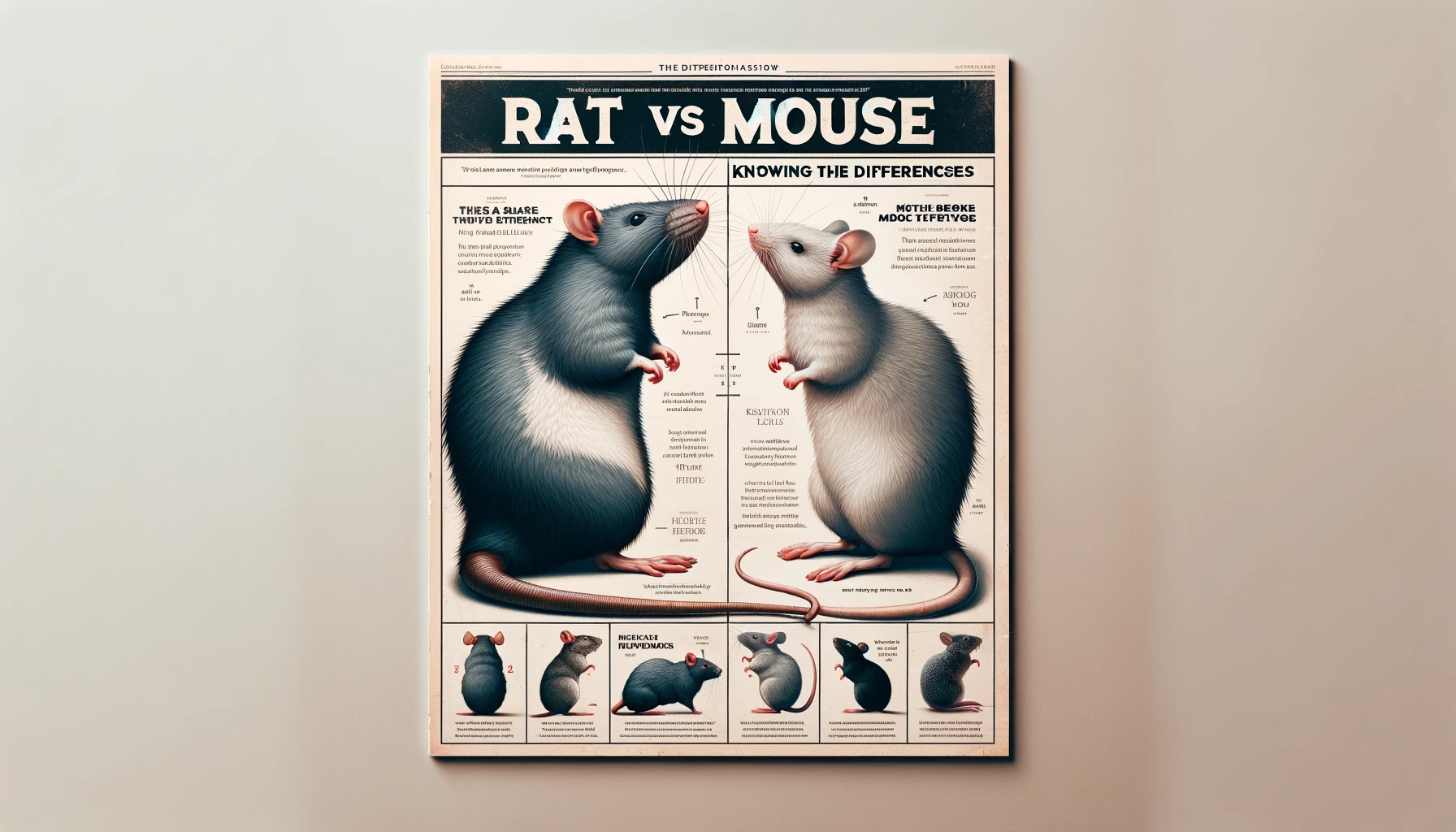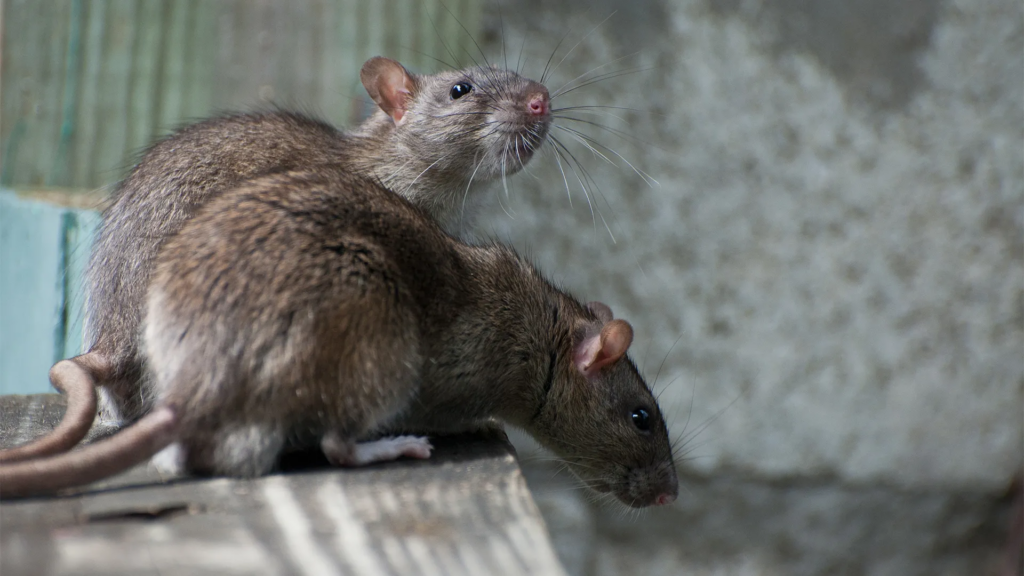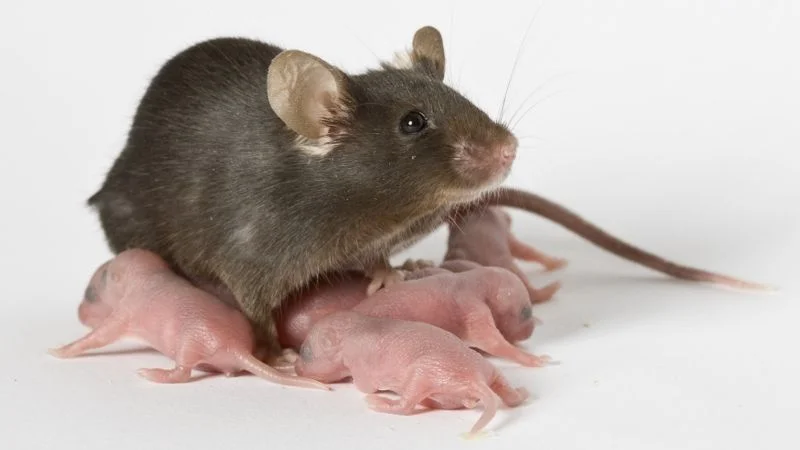
When it comes to rodents, rats and mice are among the most common and often cause confusion due to their similarities. However, these two creatures have distinct differences in size, behavior, and appearance. In this article, we will explore the various aspects that set rats and mice apart, enabling you to identify and understand them better.
Before delving into the specifics, it is essential to have a visual guide to help you identify mice accurately. Mice are typically smaller than rats, with a slender body and prominent ears. Their fur can vary in color, ranging from gray to brown. On the other hand, rats are larger and have a robust, cylindrical body. They have smaller ears compared to mice, and their fur can be brown, black, or even white.

Now that we have established some basic physical differences between rats and mice, let's explore their habitats and behavior. Mice are known to be excellent climbers and jumpers, allowing them to access various areas in homes and buildings. They are also highly adaptable and can survive in a wide range of environments, including urban areas, fields, and forests. Mice are primarily nocturnal creatures, meaning they are most active during the night.
Rats, on the other hand, are not as agile as mice when it comes to climbing and jumping. They are more inclined to burrowing and digging, creating extensive tunnel systems underground. Rats are highly adaptable as well, and they can be found in both urban and rural areas. Unlike mice, rats are known to be more active during the day, although they can also be active at night.
Another significant distinction between rats and mice lies in their dietary preferences. Mice are omnivorous, meaning they consume both plant matter and other small animals. They have a particular fondness for grains, seeds, and fruits. Rats, on the other hand, are opportunistic feeders and will eat almost anything they can find. They have a more varied diet that includes grains, fruits, vegetables, meat, and even garbage.
When it comes to reproduction, both rats and mice are known for their ability to reproduce rapidly. A female mouse can give birth to a litter of 5-10 pups every 19-21 days, while a female rat can have a litter of 7-14 pups every 21-23 days. This high reproductive rate contributes to their population growth and the challenges they pose in terms of pest control.

While rats and mice may share some similarities, such as their ability to transmit diseases and cause damage to property, it is crucial to recognize their distinctions. Understanding these differences can help in implementing effective pest control strategies and ensuring the well-being of both humans and these small mammals.
Decoding the characteristics of rats is crucial in distinguishing between these two rodents. Rats have a long, scaly tail, which is usually the same length as their body. They are known to have a more aggressive and territorial nature than mice. Additionally, rats are excellent climbers and tend to build their nests in elevated areas like attics or roofs.

Let's delve deeper into the fascinating world of rats and mice to understand their differences in greater detail.
When it comes to their diet, mice are omnivorous creatures, meaning they consume both plant-based and protein-based foods. They are known to be nibblers and typically feed on small amounts throughout the day. Rats, on the other hand, have a more varied diet. They are opportunistic eaters and will consume anything they find, including fruits, vegetables, grains, and even meat.
It's interesting to note that rats have a highly developed sense of taste and smell, which allows them to detect and locate food sources more efficiently. This heightened sensory perception contributes to their ability to survive in various environments.
The habitat and health differences between rats and mice are also significant. Mice prefer to nest in areas closer to humans, such as attics, basements, and wall voids. However, rats are more adapt at being outside and tend to create burrows in gardens or in the ground.
Rats are highly adaptable creatures, capable of thriving in urban areas as well as rural landscapes. Their ability to survive in diverse habitats has contributed to their widespread distribution across the globe. In contrast, mice are more reliant on human structures for shelter and food sources.
Moreover, rats can carry diseases that can be transmitted to humans, whereas mice pose a lower health risk. The potential health hazards associated with rats make it essential to address any infestations promptly and take appropriate measures to prevent their entry into living spaces.
Understanding rat and mouse behavior disparities is another vital aspect of distinguishing between them. Rats are known to be more cautious and wary of new objects or food sources. They may take longer to approach traps and may display aggressive behavior if they feel threatened.
On the other hand, mice are curious and explore new environments quickly. This behavior often leads them to discover traps or baits more swiftly. Their inquisitive nature makes them more susceptible to getting caught in traps meant for their eradication.
One intriguing behavior that sets rats apart from mice is their tendency to engage in muricide, or mouse-killing behavior. Although both species are known to be territorial, rats pose a more significant threat to mice due to their predatory instinct. This behavior has been observed in laboratory settings, where rats may kill and consume mice if housed together.
It's fascinating to study these intricate dynamics between rats and mice, shedding light on the complexities of their interactions and behaviors.
Aside from the behavioral distinctions, it is important to be aware of the health problems associated with rats and mice. Both rodents can carry various diseases, many of which can be transmitted to humans through contact with their urine, droppings, or saliva. These diseases include hantavirus, leptospirosis, and salmonellosis, among others.
Hantavirus is a serious respiratory disease that is primarily transmitted to humans through the inhalation of infected rodent urine, droppings, or saliva. The virus can cause severe symptoms such as fever, muscle aches, and difficulty breathing. In some cases, hantavirus can lead to Hantavirus Pulmonary Syndrome (HPS), a potentially fatal condition characterized by respiratory failure.
Leptospirosis is another disease that can be transmitted by rats and mice. It is caused by bacteria of the genus Leptospira, which can be found in the urine of infected rodents. Humans can contract the disease through direct contact with contaminated water or soil, or through contact with objects or surfaces that have been contaminated with the urine of infected rodents. Leptospirosis can cause a wide range of symptoms, including fever, headache, muscle pain, and jaundice. In severe cases, it can lead to organ failure and even death.
Salmonellosis is a bacterial infection caused by the Salmonella bacteria, which can be carried by rats and mice. The bacteria can be present in their feces and can contaminate food, water, or surfaces that come into contact with the rodents. Consuming contaminated food or water can lead to symptoms such as diarrhea, fever, and abdominal cramps. While most cases of salmonellosis resolve on their own, severe infections may require medical treatment.
In addition to these specific diseases, rats and mice can also carry other pathogens and parasites that can pose a risk to human health. For example, they can be carriers of fleas, ticks, and mites, which can transmit diseases such as Lyme disease and typhus. These parasites can infest homes and cause additional health problems for both humans and pets.
It is important to take precautions to prevent the transmission of these diseases and to control rodent populations in and around your home. This can include practicing good hygiene, such as washing hands thoroughly after handling rodents or cleaning up their droppings, as well as sealing any potential entry points to prevent rodents from entering your home. Additionally, it is advisable to consult with a professional pest control service to effectively manage and eliminate rodent infestations.
When it comes to identifying rats, several key characteristics can help you spot them. Rats are larger than mice, with an average length of 10-12 inches (25-30 cm) excluding the tail. They have a fur-covered tail that is scaly at the base. Their ears and eyes are relatively small compared to their body size.
In contrast, mice are much smaller, usually measuring around 7-8 inches (18-20 cm) in length, excluding the tail. Mice have larger ears and eyes compared to their body size, giving them a unique appearance. Unlike rats, their tail is long, thin, and semi-transparent, with fine hair covering the entire length.
Identifying mice is relatively straightforward due to their distinct characteristics. Mice have a small, triangular-shaped head, large ears, and bulging eyes. They also have a pointed snout and a body covered in short fur. The fur color can vary, ranging from gray to light brown.
By understanding these differences in size, behavior, and appearance between rats and mice, you can better identify and address any rodent-related concerns you may have. It is crucial to keep in mind that both of these rodents can cause damage and health risks, so taking appropriate measures to prevent their presence is essential.